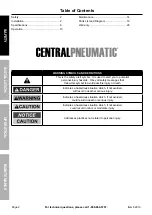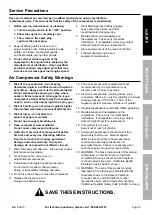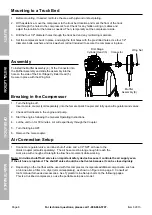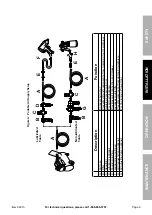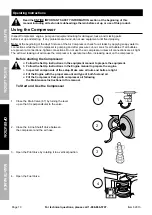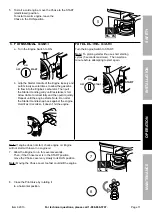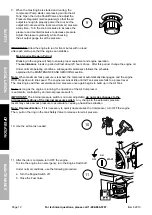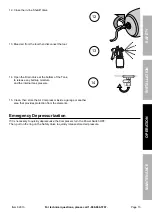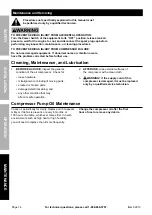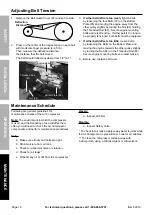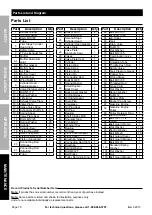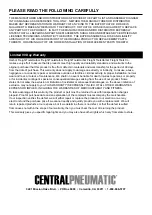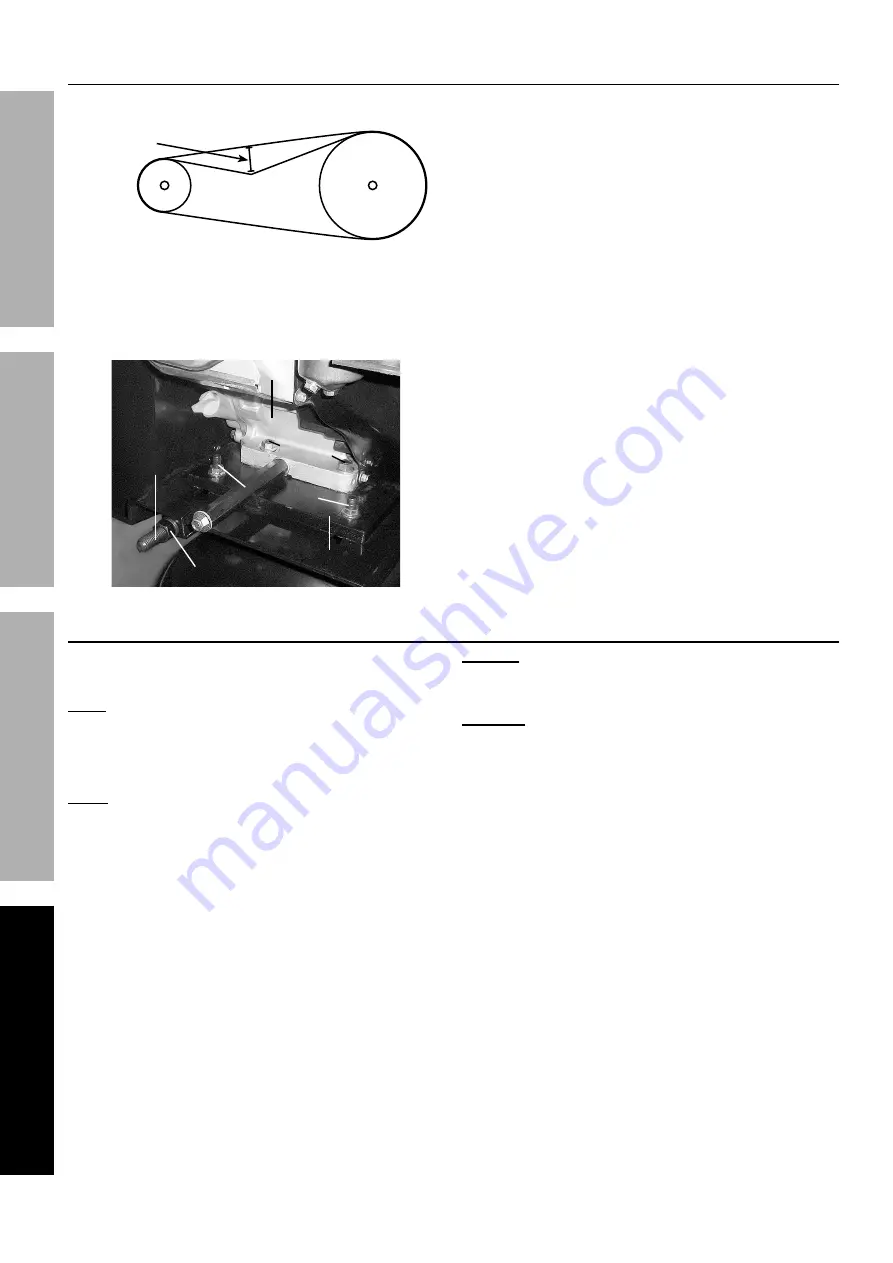
Page 16
For technical questions, please call 1-888-866-5797.
Item 62913
SAFETY
Op
ERA
TION
M
AINTENANCE
INST
ALLA
TION
Adjusting Belt Tension
1. Remove the Belt Guard Cover (97) and set it aside.
Deflection
Distance
2. Press on the center of the longest span on each belt
with moderate finger pressure (4-4.5 lb.).
Then measure the deflection distance,
the distance that the belt moved.
The belt should deflect anywhere from 1/2″ to 1″.
Bottom Plate (85)
Nut (84)
Threaded Rod
(80)
Bolts (79)
Engine
Mounting
Bolts
Engine Base
3.
If either belt deflects too much,
tighten belts
by loosening the four Bolts (79) on the Bottom
Plate (85) and moving the engine away from the
other pulley slightly by turning the Nut (84) holding
the Threaded Rod (80). Secure engine mounting
bolts and retest tension. If either belt is too long to
be properly tensioned, both belts must be replaced.
4.
If either belt deflects too little,
loosen belts
by loosening the Bolts on the Bottom Plate and
moving the engine towards the other pulley slightly
by turning the Nut (84) on the Threaded Rod (80).
Secure engine mounting bolts and retest tension.
5. Before use, replace belt cover.
Maintenance Schedule
Following are general guidelines for
maintenance checks of the Air Compressor.
Note:
The environment in which the compressor
is used, and the frequency of use will affect how
often you will need to check the Air Compressor
components and perform maintenance procedures.
Daily:
a. Make sure all nuts and bolts are tight.
b. Drain moisture from air tank.
c. Check for abnormal noise or vibration.
d. Check for air leaks.
*
e. Wipe off any oil or dirt from the compressor.
**
Weekly:
a. Inspect Air Filter.
Monthly:
a. Inspect Safety Valve.
* To check for air leaks, apply soapy water to joints while
the Air Compressor is pressurized. Look for air bubbles.
** To clean the compressor surface, wipe with
a damp cloth, using a mild detergent or mild solvent.

